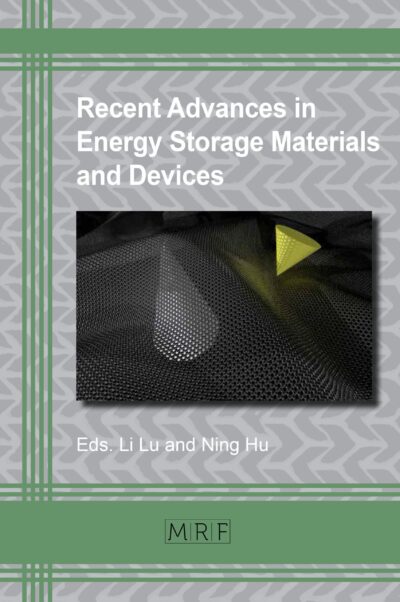Structure and Properties of Lengthy Rails after Extreme Long-Term Operation
A.A. Yuriev, V.E. Gromov, Yu.F. Ivanov, Yu.A. Rubannikova, M.D. Starostenkov, P.Y. Tabakov
Materials Research Foundations Vol. 106
Publication Date 2021, 194 Pages
Print ISBN 978-1-64490-146-5 (release date August 2021)
ePDF ISBN 978-1-64490-147-2
DOI: 10.21741/9781644901472
The long-term operation of rails has been studied with focus on (1) the formation and behavior of structural-phase states and nanoscale structures, (2) the modelling of the processes occurring in the surface layers of rails under severe plastic deformation and (3) the methods and techniques for assessing the structural and phase states of rails, internal stresses, and their evolution during the life cycle. The book references 264 original resources and includes their direct web link for in-depth reading.
Keywords
Long Rails, Long-term Operation, Transmission Electron Microscopy, Steel, Differentiated Hardening, Structural Phase States, Nanoscale Structures, Wear, Deformation Effects, Recrystallization, Segregation, Homogenization, Relaxation, Phase Transitions, Phase Decomposition, Amorphization, Sintering, Filling of Micro- and Nanopores, Nanocapillaries, Severe Plastic Deformation, Megaplastic Deformation
Table of contents
Introduction 1
1. Evolution of Structure and Properties of Rails During Operation 3
1.1 Structural-phase state and properties of rails during long-term operation 3
1.1.1 Influence of various factors 3
1.1.2 Formation of nanostructures 4
1.1.3 White layer on the rolling surface of the rails 8
1.1.4 Structure and properties of body-hardened worn rails 12
1.2 Simulation of processes during operation of rails and megaplastic deformation 21
Conclusion 29
2. Material and Methods of Research 31
2.1 Research material 31
2.2 Methods for studying the structure 31
2.2.1 Macro and microstructural studies 32
2.2.2 X-ray structural studies 33
2.2.3 Electron microscopic examination 33
2.3 Methods for determining mechanical properties 36
3. Differentially Hardened Rails: Structure, Phase Composition, and Dislocation Substructure 39
Conclusion 53
4. Evolution of the Structure and Properties of the Metal of Differentially Hardened Rails in the Process of Operation 54
4.1 Assessment of the quality of differentially hardened rails 54
4.1.1 Chemical composition of rail steel 54
4.1.2 Mechanical properties of rail steel 54
4.1.3 Macrostructure of rail steel 55
4.1.5 Microstructure of rail steel after operation [2, 123] 57
4.2 Phase composition and defective substructure of differentially hardened rails after operation [141-146] 62
4.3 Gradients of the structural-phase state of steel, formed as a result of the operation of rails [150] 77
4.4 Transformation of the structure of lamellar pearlite of steel during long-term operation of rails [155, 156] 81
Conclusion 89
5. Carbon Re-Distribution in the Structure of Rail Steel after Long-Term Operation 90
Conclusion 102
6. Physical Nature of Hardening of Metal of Differentially Hardened Rails in the Process of Long-Term Operation 103
6.1 Evolution of mechanical, tribological properties, macro- and microstructure of the surface layer of metal of differentially hardened rails during long-term operation 103
6.2 Phase composition and defective metal substructure of differentially hardened rails during long-term operation 104
6.3 Physical nature of rail metal hardening during long-term operation 112
6.4 Mechanisms for strengthening the metal of rail steel 115
Conclusion 116
7. Structural and Phase State of Rails after the Hauled Load of 1411 Million Gross Tons 118
7.1 Structure of rail metal at macro and micro levels 118
7.2 Metal structure of rails at submicro- and nanoscale 129
7.3 Gradient of the rail metal structure after the hauled load of 1,411 million gross tons 132
Conclusion 143
8. Physical Nature of Strengthening of Rail Metal after Extremely Long Operation 144
8.1 Impact strength and hardness 144
8.2 Microhardness 145
8.3 Tribological tests of steel 146
8.4 Physical nature of metal hardening during extremely long-term operation 148
8.5 Comparative analysis of the structural-phase state and hardening mechanisms at the yield point after the hauled load of 691.8 and 1411 million gross tons 157
Conclusion 162
About the authors 164
References 166













